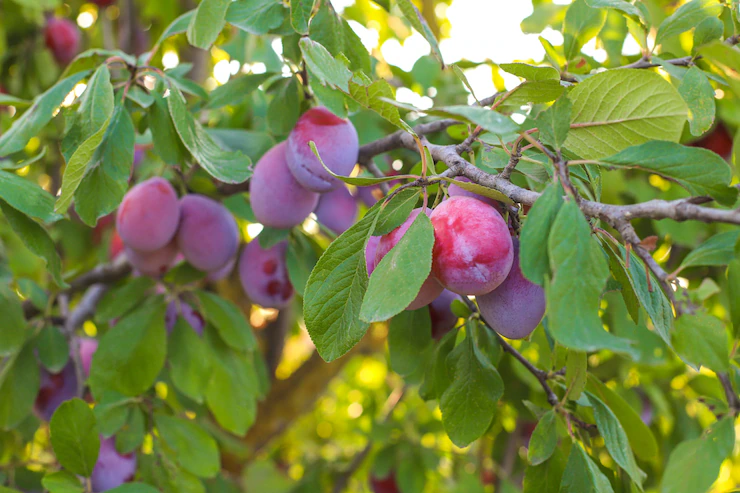Plums are delicious and nutritious fruits that can be successfully grown in the diverse climates of South Africa. Whether you’re a seasoned gardener or a beginner, understanding the specific requirements for growing plums is essential for a successful harvest. In this article, we will explore ten important things you should know before growing plums in South Africa.
- Climate and Location: Plums thrive in a wide range of climates, from temperate to subtropical regions. Different plum varieties have specific climatic requirements, so choose a cultivar suitable for your local climate. In South Africa, regions such as the Western Cape, Eastern Cape, and parts of Mpumalanga are ideal for plum cultivation.
- Variety Selection: Select plum varieties that are well-adapted to your specific region and climate. Popular plum varieties suitable for South Africa include African Rose, Angeleno, and Laetitia. Consider factors such as flavor, resistance to diseases, and chilling requirements when choosing a variety.
- Soil Requirements: Plums prefer well-draining soil with a slightly acidic to neutral pH level. Sandy loam or loamy soil types are ideal for plum cultivation. Ensure the soil is enriched with organic matter before planting to improve fertility and drainage.
- Planting: The best time to plant plum trees in South Africa is during the dormant season, which is typically in late winter or early spring. Dig a hole wide and deep enough to accommodate the root system, ensuring proper spacing between trees. Place the tree in the hole, spread the roots, and backfill with soil, ensuring the bud union is slightly above ground level.
- Watering: Plums require regular watering, especially during dry spells and the fruit development stage. Provide deep irrigation to establish a healthy root system. Once established, they are moderately drought-tolerant, but consistent moisture is important for optimal growth and fruit production.
- Pruning: Pruning plum trees is essential for maintaining their shape, promoting airflow, and stimulating fruit production. Prune in late winter or early spring before bud break. Remove dead, diseased, or crossing branches, and thin out the canopy to allow for better light penetration and airflow. Prune lightly to avoid excessive vigor.
- Fertilization: Plum trees benefit from regular fertilization to ensure healthy growth and fruiting. Apply a balanced fertilizer in early spring and late summer, following the manufacturer’s instructions. Avoid excessive nitrogen fertilization, as it can lead to excessive vegetative growth at the expense of fruit production.
- Pest and Disease Management: Plum trees can be susceptible to pests such as aphids, plum curculio, and fruit flies. Regular monitoring and appropriate pest control measures can help manage infestations. Common diseases in plums include brown rot, bacterial canker, and fungal infections. Practice good sanitation, provide proper airflow, and consider organic disease control methods.
- Harvesting: Plums are ready for harvest when they have reached their mature color and are slightly soft to the touch. Harvesting times vary depending on the plum variety and local climate. Gently twist or cut the fruits from the tree to avoid damaging the branches. Handle them carefully to prevent bruising.
- Storage and Preservation: Fresh plums can be stored at room temperature for a few days. For longer storage, refrigerate them in a plastic bag. Plums can also be preserved by canning, drying, or making jams and preserves to enjoy their flavors throughout the year.
Conclusion: Growing plums in South Africa can be a rewarding endeavor, providing you with a bountiful harvest of sweet and juicy fruits. By considering the climate requirements, selecting suitable varieties, and implementing proper care and maintenance practices, you can enjoy the delights of homegrown plums. Embrace the versatility of plums in your culinary creations or enjoy them fresh for a burst of natural sweetness. Happy plum cultivation!
Image by BalashMirzabey on Freepik







